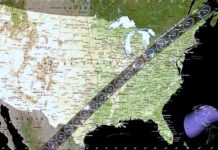GREENBELT, Md., Dec. 9 (UPI) — A new 3-D visualization from NASA researchers shows what space looks like in Pluto’s neighborhood.
Space isn’t empty. It’s full of particles. In our solar system, radiation from the sun is constantly streaming out toward the outer reaches of the solar system.
Aside from visible light, solar radiation comes mostly in the form of solar wind and coronal mass ejections, or CMEs. These clouds or streams of radiated particles come with their own miniature magnetic fields.
Space weather scientists at NASA’s Goddard Space Flight Center combined a series of models used to predict the behavior of solar radiation. Scientists then plugged data from solar storms that had since passed Earth into the combination of models.
“We set the simulation to start in January of 2015, because the particles passing Pluto in July 2015 took some six months to make the journey from the sun,” Dusan Odstrcil, a space weather scientist at Goddard, said in a press release.
As the model reveals, sun-driven space weather looks quite different near Pluto than it does near Earth. By the time CMEs reach Pluto, their particles and magnetic fields have spread out and combined with the solar wind and other storms.
Solar storms and CMEs often appear as a balloon-like shape near Earth. But after traveling millions of miles, these clouds of radiated particles have stretched out, recombined and then stretched out again, forming thin rings.







